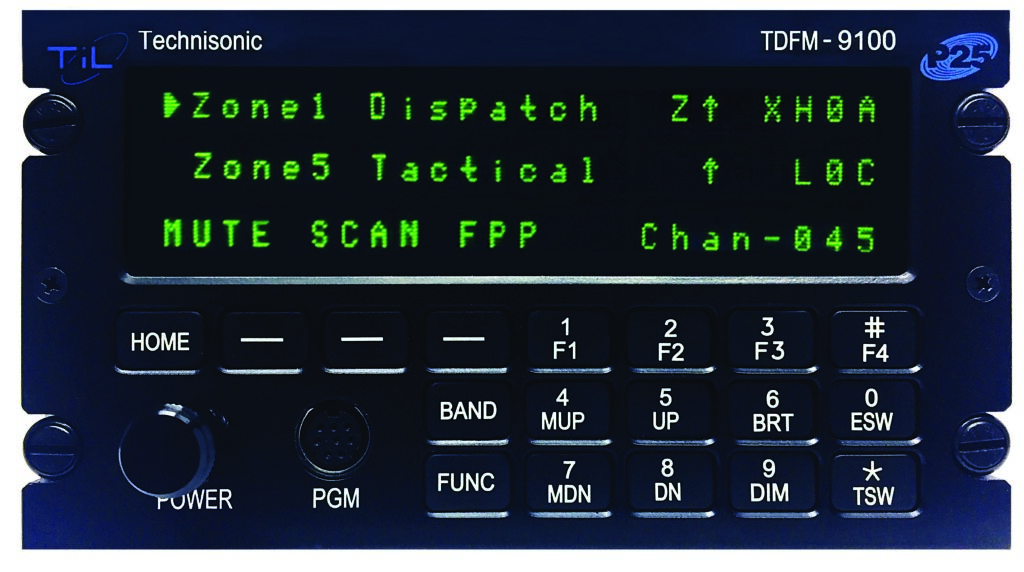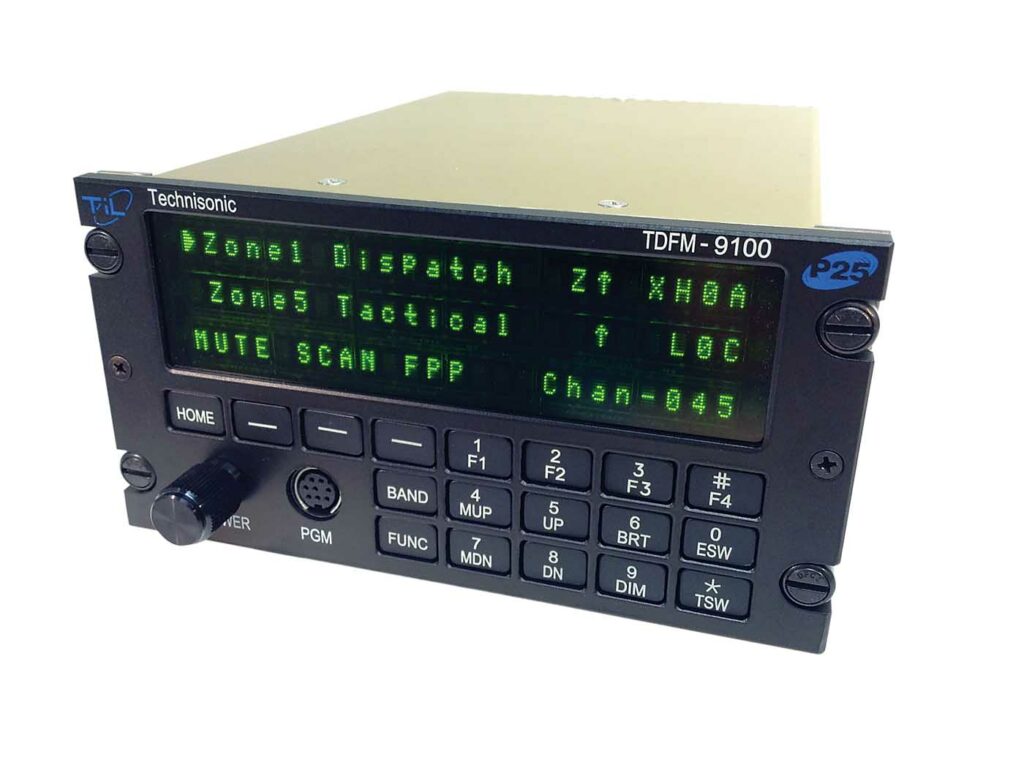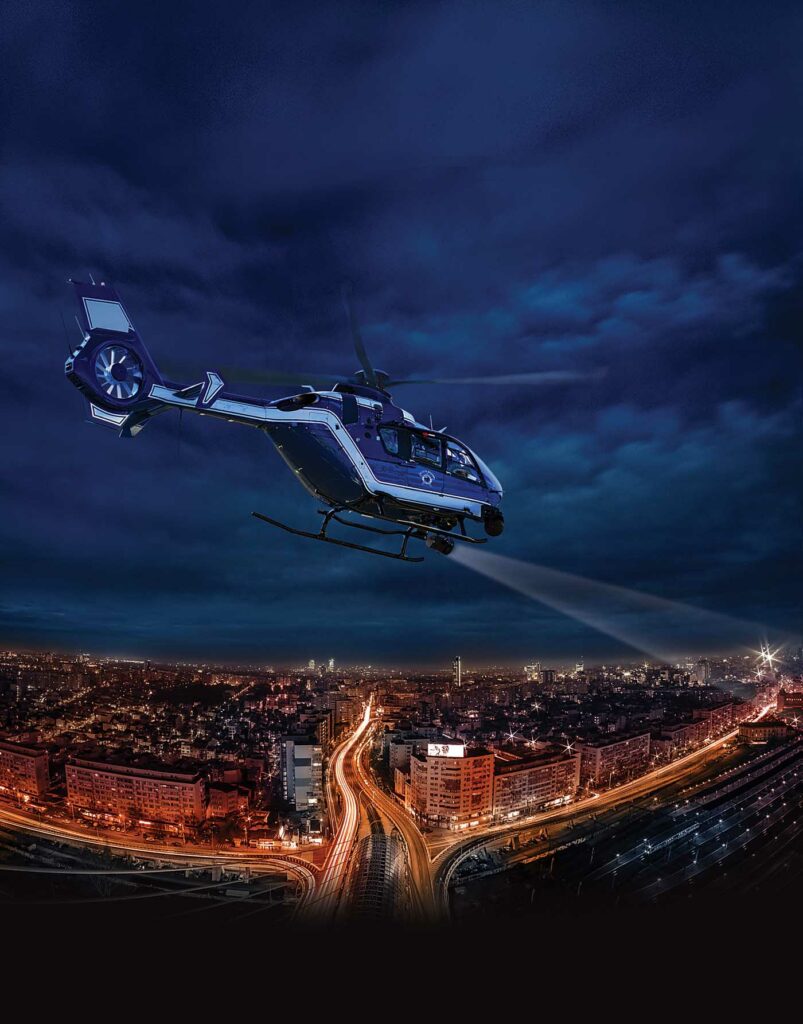Technisonic airborne communications systems are the products of choice for the demanding tactical applications of air ambulance, disaster response, fire suppression, and law enforcement. The evolving individual needs of operators in these fields demand that suppliers keep a finger on the pulse to maintain an edge.
Jim Huddock, director of federal/military/OEM sales and programs at Technisonic, calls it a “continuous improvement mindset.”
“The direction the company had adopted is one of continuous improvement, focusing on new capabilities and product updates, while also working toward making existing installations more capable,” Huddock said. “We believe this approach benefits new customers, but also provides the ability to help customers who have existing products add a needed feature or capability that might have been missing when they bought their radio.

“An example is the introduction of the T6 All-Band analog module,” Huddock said. “We took three module selections and combined them into one so that the
customer doesn’t have to balance their need for a 30-50Mhz module or a UHF 225-400MHz. It all comes together as one package. It’s a win all around.”
Knowing the customer and learning about their mission has always been the secret of Technisonic’s success. A brand-new product isn’t always needed. For example, “this year we also introduced the TDAP 650 audio panel,” Huddock said. “After we introduced the 611 a year earlier, we heard customers say, ‘We’d really like to have Bluetooth in the cockpit.’ Now they can connect via Bluetooth to the audio panel.
“We took a product and through feedback, found a way to evolve it versus coming out with a brand-new product,” Huddock explained. “A brand-new product is always nice but it’s a long process. Between engineering, testing, certification and bureaucracy, it often can take much longer. We can give our customers faster service by expanding the capability of an existing system.”
Whether it’s a brand-new product or expanding and adapting an existing one, the technicians’ needs can’t be ignored. For example, when Technisonic did the upgrade for the TDAP 650 and the TDFM, the company looked at the installer’s point of view and asked how it can make the product easier for them.

“To do this, we were able to take a digital line out of the TDFM radio set and connect it to the audio panel,” Huddock said. “So instead of running 25 wires to an audio panel, they can now run just two.” This saves the installer a lot of time and moreover, saves a lot of weight.
“For the operator, it wasn’t something he/she would ever notice,” Huddock said, “but from the installer’s standpoint, it simplified things greatly.”
Serving the aviation industry for well over three decades, the Mississauga-based company has grown to over 60 employees with minimal turnover.
“I’ve been here for 12 years now and I’m still one of the new hires,” Huddock said. “It’s nice we have a lot of longevity across the organization. There’s memory of what we’ve done before, how we did things, what works and what didn’t work. We are used to working as a team.” That team works a wide geographic area: North America, South America, and Latin America.

“We are always looking forward — to see what’s next and try to keep ahead of the industry and what’s going to be changing,” Huddock said. “Because of how long it takes to engineer a product and get it to market, it means you have to be ahead. You have to be looking down the road because it might take three years to get a brand-new product out the door.”
So, with an eye on the horizon, what might be coming for Technisonic?

“We are going to continue to expand and provide new capabilities, both within our products and the organization behind them. Support and repair, sales and administration have all adopted the ‘continuous improvement’ mindset,” Huddock said.
When it comes to adapting technologies new to aviation communications, “there are a lot more people looking toward product integrations and the use of newer digital technologies in the cockpit. We are keeping an eye on those trends and where they may lead to, where the opportunities might be to better both our products and our company,” Huddock said.









